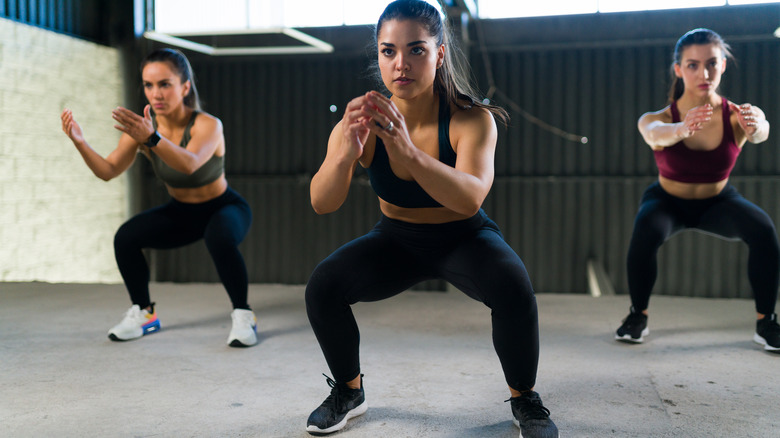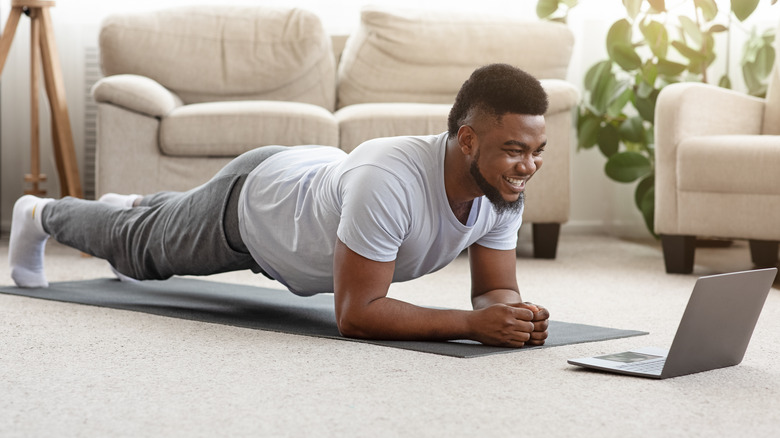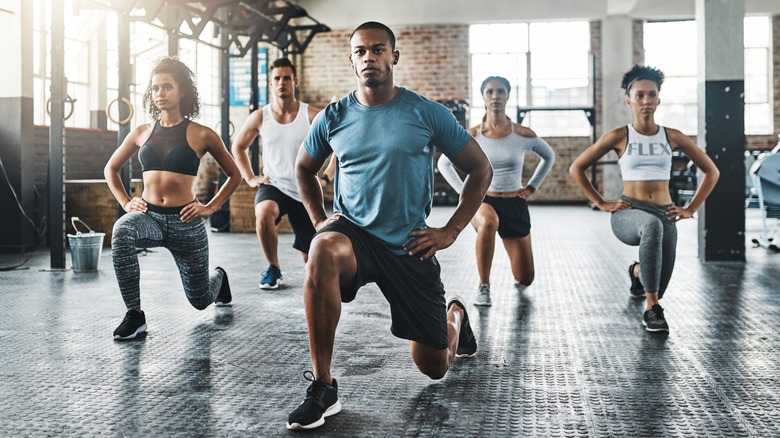How To Engage Your Core In Workouts
You've heard it from your yoga or fitness instructor — "Engage your core." It might sound confusing when you're in the "Warrior Two" position or doing squats. Engaging your core might sound like you need to do crunches while doing these moves. However, your core not only involves the six-pack abs, but also some deeper muscles you can't see.
According to Healthline, your core gives you the ability to twist and move, as well as stability so you can balance and hold your torso steady. The rectus abdominis muscle is the one you feel the most when you're doing crunches, and it's the muscle you see in the six-pack. Although the rectus abdominis helps with flexing the spine, it doesn't help much with spine stability. The obliques are the muscles on each side of your body under your ribs, and these help keep your trunk stable.
The transverse abdominis lies deep beneath your core, and it's one of the key stabilizers for the spine. The core muscles in your back include the erector spinae, quadratus lumborum, and multifidus. These stabilizers need to fire for you to maintain proper posture while lifting weights. Knowing how to activate these stabilizing muscles will help you engage your core during any workout (via Healthline).
Moves to stabilize your core
According to Healthline, you can incorporate isometric exercises to help brace your core. These exercises will keep your torso stable by engaging the deeper abdominal muscles. Another way to think about engaging your core is to imagine you're tightening your belt. This helps you activate your core stabilizers (via Shape).
One core stabilizer is the standard plank. You can start in an upper push-up position or put your knees down (via Healthline). To get a feel for how the core works to keep you balanced, try a standing march. This will also work on leg strength and stability. Stand with your feet hip-width apart and raise one leg so your thigh is perpendicular to the floor. Hold the position for a few seconds and feel your core as it helps stabilize you. Lower the leg and repeat with the opposite leg (via BarBend). Another exercise to try is the bear plank. You'll start in a tabletop position and tuck your toes. Imagine your navel drawing toward the spine without arching your back. As you press into the floor with your hands, lift your knees a few inches off the floor and hold a few seconds (via Shape).
According to the National Association for Sports Medicine, stabilization exercises like these serve as the foundation for strength and power training.
Bring this core stability to your workout
According to Shape, it's best to do these isometric core exercises before your workout. That way, you're aware of the muscles that stabilize you while lifting weights or doing other workouts. If you're not activating your core during a squat, you might force your back muscles to do most of the work.
The Harvard Medical School says you can strengthen your core while you do lunges and squats — your core helps you keep the correct posture during these moves. For example, you need to keep a neutral — not arched — spine during a squat. You'll need to pull in your abs to help stabilize your body in the squat position. You also work your core in a lunge by pulling your abs in and keeping your back neutral.
You also can't forget your core during many yoga postures. According to Yoga Journal, you need the stabilizing muscles of the core any time you're not trying to arch or bend your spine. Although mountain pose might just feel like you're standing up, you're engaging your core. Think about the transverse abdominis — the stabilizing muscle that wraps deep inside around your waist. Imagine cinching a belt while you're standing still in mountain pose. Then, you'll know what to do when your instructor says, "Engage your core."



